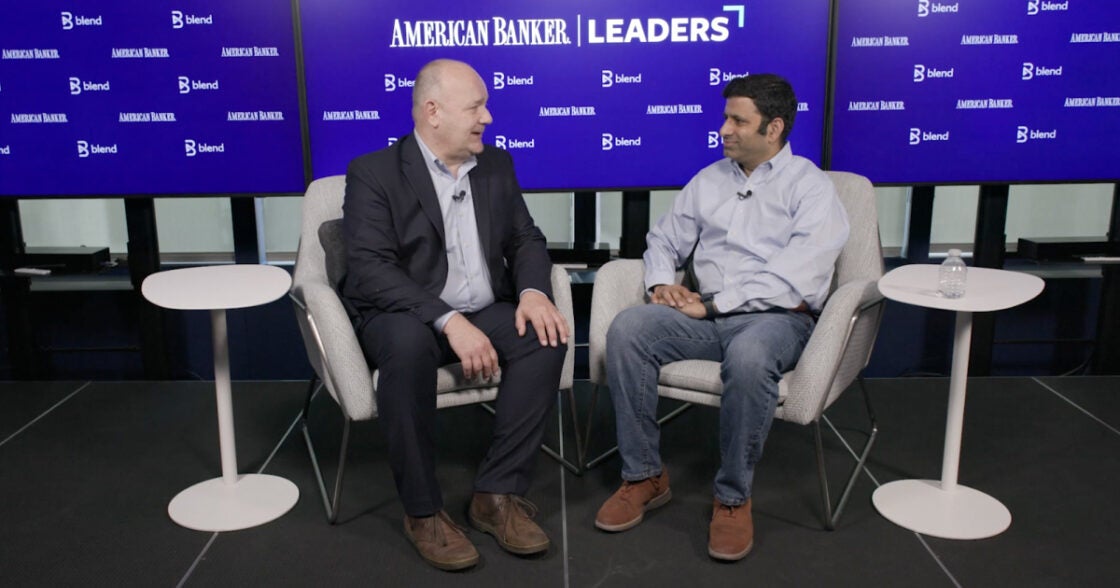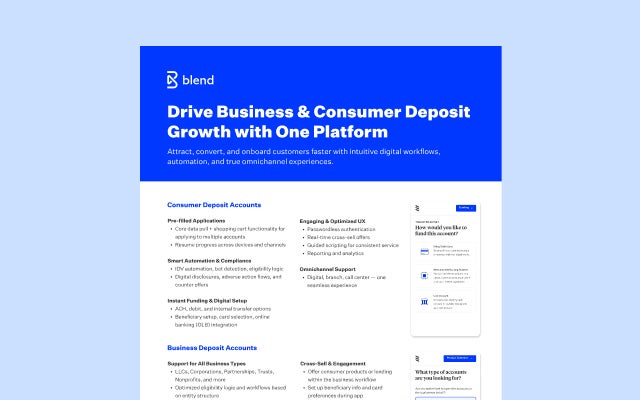May 29, 2019 in Challenges and solutions
Creating an improved omnichannel banking experience
Discover an approach to financial product delivery that will fulfill the evolving needs of customers and provide a seamless experience for lending teams.

With the rise of digital banking, many financial institutions have introduced multiple apps and systems to fulfill customer needs and expectations. While the intentions of a multichannel approach are good, it can often create fragmented customer interactions. Financial institutions looking to maintain a consistent, personal touch throughout the customer experience can consider omnichannel banking.
Omnichannel banking delivers a connected, seamless experience across every customer interaction. Here’s why an omnichannel approach to financial product delivery matters now and will continue to matter in the future.
What is omnichannel banking?
This interface strategy enables customers to communicate with their financial institution across all channels, providing those customers with identical services whether they’re conducting transactions through a mobile app or closing a loan at a branch. Omnichannel banking can also help financial institutions cut costs through process automation and real-time data synchronization and, as a result, boost revenue and customer satisfaction.
The omnichannel banking approach connects three consumer contact points — in-branch meetings, phone calls, and in-app applications — into one centralized digital core. This not only allows lenders to be more accessible, but provides customers peace of mind, knowing they can contact their bank in the way that’s most convenient for them.
Is Sarah hoping for a quick phone call before connecting her accounts? A direct line is just a click away. Is Joe craving in-person reassurance? Contact details for his loan officer are always readily available. Does Theresa need help filling out an application but can’t come into the branch during her lunch hour? Omnichannel functionality allows a loan officer to work directly with her in the mortgage application, no matter where they both may be. Plus, providing real-time, remote assistance helps ease applicant stress and maximizes completion rates.
How omnichannel banking solves customer problems
Modern banking strategies should provide customers with the service they expect while improving trust, anticipating customer needs, and offering a personalized experience. Since customer preferences have shifted to mostly digital channels, the focus on branch services has decreased. In fact, a McKinsey report found that banks closed 9% of branches in 2021 alone. Still, more than one-third of banks reported a 20% bump in branch activity, signaling that physical locations remain a key component for a positive banking experience.
An omnichannel banking approach allows your customers to conduct business on their terms and their schedule. And when it comes to loan processing and approval, automated digital services enable lenders to more quickly and accurately approve loan applications, getting customers the funds they need while freeing up employee hours for further business development and customer relationship building.
Streamlining the loan application process with omnichannel banking
Creating an omnichannel banking experience with a digital platform enables customers to start and finish the loan application process through the most convenient channels.
For example, Sarah can start an application online at night, then finish by delivering her documents directly to her loan officer the next morning. Joe can walk into his usual branch or reach out via phone for loan information, then complete his application, upload documents, and e-sign on his home computer anytime during the day.
BMO Harris Bank uses Blend’s omnichannel banking platform to build upon their outstanding customer service offerings, allowing loan teams and borrowers to seamlessly move between digital, intermediated, or in-person interfaces. If a customer doesn’t have time to visit a branch, a banker can simply send them to the digital app to complete tasks. As a result of digital implementation, BMO Harris increased its year-over-year digital home equity applications by 253%.
According to Mark Shulman, head of consumer lending with BMO Harris, an added benefit to facilitating a smoother self-serve process is more time for lenders to focus on relationship building and more impactful tasks. “I’ve heard several times from bankers that they now have more time to sell,” he says.
Meeting customers where they are — anytime, anywhere
Financial transactions are some of life’s more stressful moments, so the more you can do to deliver an exceptional experience, the happier and more loyal your consumers will be. Show them you care with simple, guided digital experiences — just like they’d have in person if they walked into a branch.
An omnichannel banking approach replaces the haphazard interactions between loan teams and consumers with one streamlined experience.
Ready to unlock your financial institution’s potential for success in omnichannel banking?
Find out what we're up to!
Subscribe to get Blend news, customer stories, events, and industry insights.


